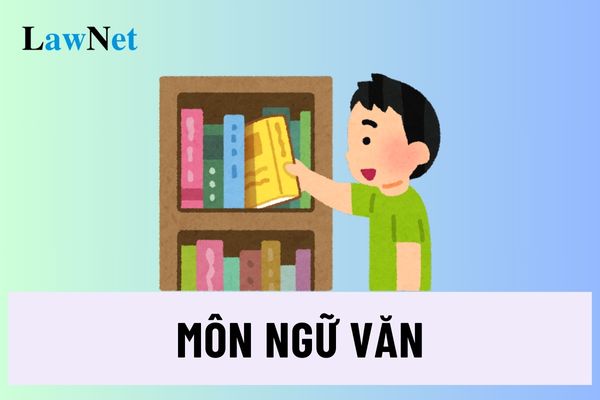Definition of Document Types in the Literature Curriculum
The Definition of Types of Documents in the Literature Curriculum
How are the concepts of various types of documents in the Literature curriculum defined?Definition of Document Types in the 2018 General Education Program for Literature
Based on Subsection 1, Section 8 of the General Education Program for the subject of Literature issued together with Circular 32/2018/TT-BGDDT, the definitions of document types in the Literature subject program are as follows:
- Expressive Document: A document mainly used to express feelings and emotions.
- Multi-Modal Document: A document that combines linguistic means with other means such as symbols, diagrams, charts, images, and sounds.
- Descriptive Document: A document mainly used for description.
- Argumentative Document: A document mainly used to persuade the reader (listener) about a certain issue.
- Practical Document: A document mainly used to meet daily communication needs.
- Informative Document: A document mainly used to provide information.
- Explanatory Document: A document mainly used to introduce an object or phenomenon.
- Narrative Document: A document mainly used to recount an event.

Definition of document types in the Literature subject program (Image from the Internet)
Which Grade Levels Apply the 2018 General Education Program for Literature?
According to the provisions of Article 2 of Circular 32/2018/TT-BGDDT, the program is implemented according to the following timeline:
The general education program is implemented according to the following schedule:
1. Starting from the school year 2020-2021 for Grade 1.
2. Starting from the school year 2021-2022 for Grades 2 and 6.
3. Starting from the school year 2022-2023 for Grades 3, 7, and 10.
4. Starting from the school year 2023-2024 for Grades 4, 8, and 11.
5. Starting from the school year 2024-2025 for Grades 5, 9, and 12.
Based on Section 1 of the General Education Program for the Literature subject issued together with Circular 32/2018/TT-BGDDT, the provisions are as follows:
I. SUBJECT CHARACTERISTICS
Literature is a subject in the field of Language and Literature Education, taught from Grade 1 to Grade 12. In primary school, this subject is called Vietnamese; in middle school and high school, it is called Literature.
Literature is a subject that has both an instrumental and aesthetic-humanistic nature; it helps students acquire a means of communication, forming the basis for learning all other subjects and educational activities in school; and is also an important tool for educating students about the noble values of national culture, literature, and language; developing in students healthy emotions, humane feelings, a compassionate and altruistic lifestyle...
...
The 2018 General Education Program for Literature is applied to students from elementary, middle, and high school levels in the school year 2024-2025, with the names of the subject as follows:
Elementary Level: Vietnamese
Middle and High School Levels: Literature.
Implementation Time for the 2018 General Education Program for Literature at Different Educational Levels
Based on Section 8 of the General Education Program for the Literature subject issued together with Circular 32/2018/TT-BGDDT, the implementation time for the Literature subject program at different education levels is as follows:
(1) Implementation Time in Different Grades (Number of Class Periods)
| Grade 1 | Grade 2 | Grade 3 | Grade 4 | Grade 5 | Grade 6 | Grade 7 | Grade 8 | Grade 9 | Grade 10 | Grade 11 | Grade 12 |
| 420 | 350 | 245 | 245 | 245 | 140 | 140 | 140 | 140 | 105 | 105 | 105 |
At the high school level, each grade gets an additional 35 periods for elective study topics.
(2) Time Allocation for Educational Content
The time allocated for educational content is arranged proactively by textbook authors and teachers based on the required achievements for each grade and actual teaching conditions. However, it is necessary to ensure a reasonable balance among the following components:
- Balancing the acquisition of knowledge with skills practice (focusing on practical skills and application).
- Balancing the types and forms of documents to read, write, speak, and listen (allocating more time for reading literary texts).
- Balancing the skills of reading, writing, speaking, and listening (allocating more time for practicing reading skills); the specific percentage of time allocated to skills in each grade is as follows:
| Group Grade | Reading | Writing | Speaking and Listening | Periodic Assessment |
| Grades 1 to 3 | about 60% | about 25% | about 10% | about 5% |
| Grades 4 to 5 | about 63% | about 22% | about 10% | about 5% |
| Grades 6 to 9 | about 63% | about 22% | about 10% | about 5% |
| Grades 10 to 12 | about 60% | about 25% | about 10% | about 5% |
Additionally, the allocation of periods for elective study topics in each grade is as follows:
| Study Topic | Grade 10 | Grade 11 | Grade 12 |
| Study Topic 10.1: Practice research and write reports on a folk literature issue | 10 | ||
| Study Topic 10.2: Dramatize a literary work | 15 | ||
| Study Topic 10.3: Read, write, and introduce a poetry collection, a short story collection, or a novel | 10 | ||
| Study Topic 11.1: Practice research and write reports on a classical literature issue | 10 | ||
| Study Topic 11.2: Explore language in modern social life | 15 | ||
| Study Topic 11.3: Read, write, and introduce a literary author | 10 | ||
| Study Topic 12.1: Practice research and write reports on a modern or post-modern literature issue | 10 | ||
| Study Topic 12.2: Explore an artwork adapted from literature | 15 | ||
| Study Topic 12.3: Explore the writing style of a literary school: Classical, Realistic, or Romantic | 10 |

